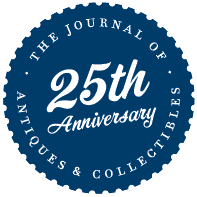The Significance and Nostalgia of the WPA National Park Posters
By Jessica Kosinski
There is something magical about the bold lines and vibrant colors of vintage National Park posters. These posters, especially those created under the Works Progress Administration (WPA) during the Roosevelt era (1933-1945), were much more than simple advertisements. They acted as rallying cries for a nation in recovery. They extended invitations to explore the country’s wild beauty. Ultimately, they became collectible treasures that tell a story of resilience and creativity.
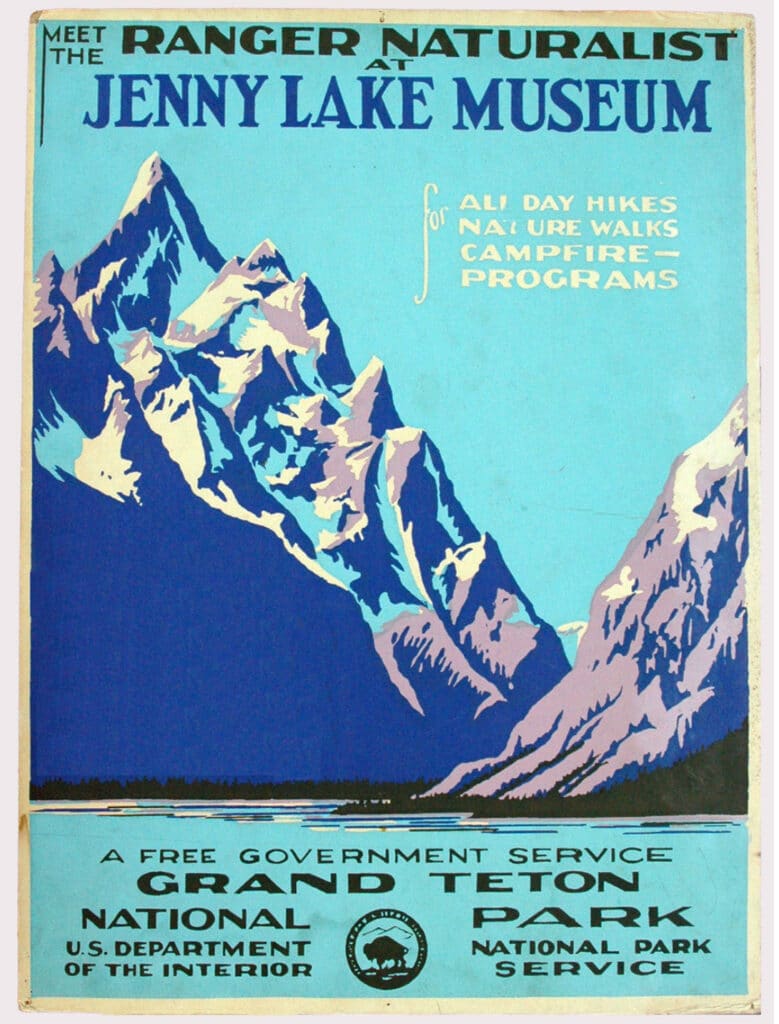
The WPA and the Birth of National Park Posters
In the midst of the Great Depression, President Franklin D. Roosevelt launched the New Deal on March 4, 1933. it was composed as a series of programs designed to put Americans back to work and restore hope to a struggling nation. One such series was built under the Works Progress Administration (WPA). The WPA not only built roads, bridges, and public buildings but also recognized the importance of the arts in lifting spirits and fostering community. The WPA’s Federal Art Project, a branch of the larger initiative, hired thousands of artists to create murals, sculptures, and, most notably, posters.
Between 1938 and 1941, the WPA commissioned a series of hand-silkscreened posters promoting America’s national parks. Only 14 of these iconic designs were ever produced. Each celebrated a specific park’s natural grandeur, from the soaring peaks of Yosemite to the misty forests of the Great Smoky Mountains National Park. These posters were printed in small batches. Estimates suggest only 50 to 100 copies of each design were made. This makes them incredibly rare today.
Drawing Crowds: The Posters’ Purpose and Impact
The WPA’s National Park posters were more than just pretty pictures. They served a vital role in encouraging Americans to visit and appreciate their national parks, which were still relatively young and in need of support. After the Civilian Conservation Corps (CCC) had spent years building trails, campgrounds, and visitor centers, the WPA stepped in to spread the word that the parks were open for business. The posters, with their striking visuals and bold typography, were displayed in train stations, post offices, and other public spaces. They caught the eye of travelers and locals alike.
These posters worked. They drew crowds to the parks. They sparked a sense of adventure and national pride. In a time when many Americans had little extra money for travel, the posters reminded people of the beauty waiting just beyond their doorstep. They also highlighted the value of preserving these landscapes for future generations. The images were optimistic, energetic, and distinctly American. They reflected the country’s determination to move forward.
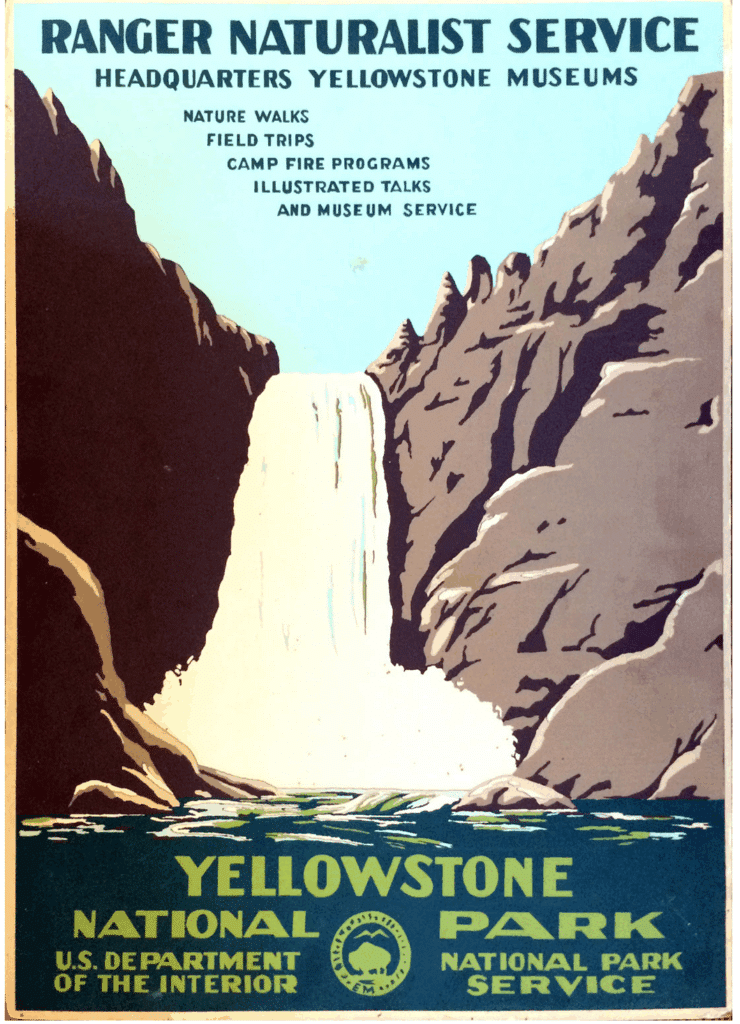
The Artistry Behind the Posters
What makes these posters so captivating is their unique style. WPA artists were encouraged to experiment. This resulted in designs that were bold, simple, and full of life. The posters featured strong colors, dynamic compositions, and a focus on the natural elements that made each park special. Typography was treated as an art form in itself. The lettering was both functional and visually striking.
Many of the artists were unemployed professionals. They were given the chance to utilize their craft and contribute to the national recovery effort. Their work was not just a job. It was a mission to inspire and uplift. The posters they created became symbols of hope, not just for the parks themselves but for the country as a whole.
The Fate of the Posters and Their Rediscovery
Despite their impact, most of the original WPA National Park posters were lost to history. When the promotional campaigns ended, the posters were often discarded. They were seen as disposable advertising rather than works of art. For decades, they were forgotten. Their bold designs were seemingly buried in the sands of time.
That changed in the early 1970s. A park ranger named Doug Leen stumbled upon one of the original posters in a barn at Grand Teton National Park. His discovery sparked a renewed interest in the WPA posters. This led to a hunt for surviving originals and a revival of the iconic style. Today, only a dozen of the original 14 designs are known to exist. This makes them some of the rarest and most sought-after pieces of American graphic art.
Why These Posters Matter
The WPA National Park posters are more than just relics of the past. They are reminders of the power of art to bring people together. They inspire adventure. They celebrate the beauty of the natural world. For collectors, they offer a tangible connection to a pivotal moment in American history. That was a time when the country was rebuilding, both literally and figuratively. It was a time when the arts played a central role in that process.
The posters also serve as a testament to the enduring appeal of America’s national parks. Even today, the images created by WPA artists continue to inspire new generations of travelers and outdoor enthusiasts. The bold, colorful style has become synonymous with the parks themselves. It evokes a sense of nostalgia and wonder that transcends time.
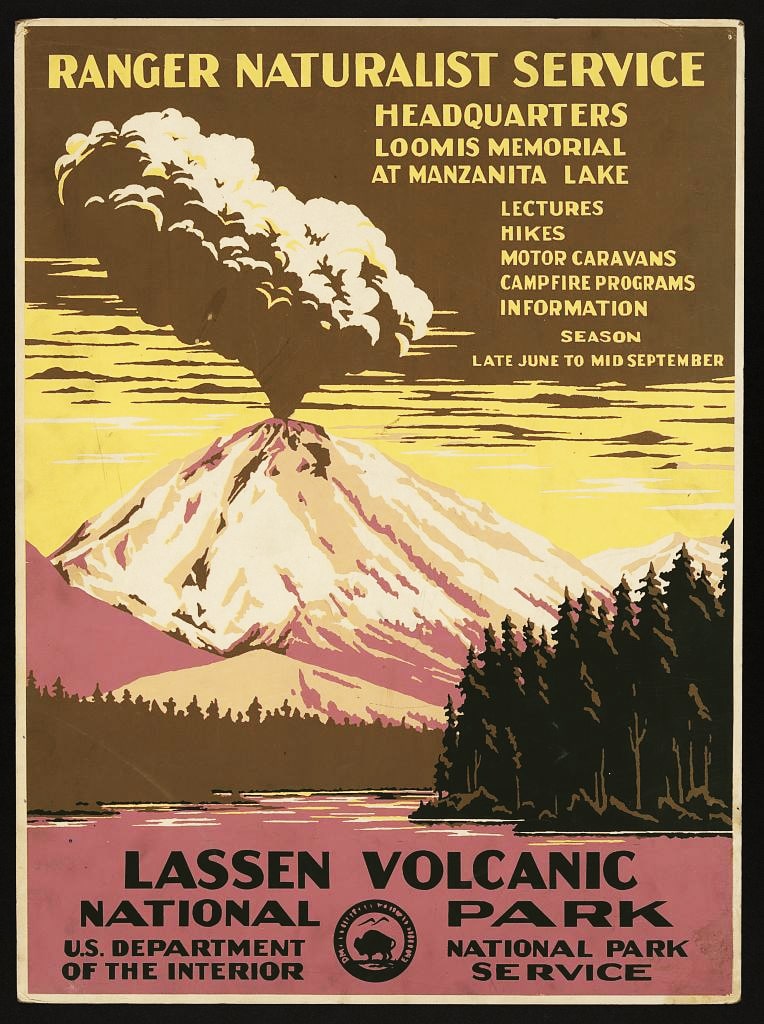
Collecting National Park Posters Today
For antiques enthusiasts, WPA National Park posters represent a unique intersection of art, history, and Americana. Their rarity and historical significance make them highly sought after and collectible. Original prints fetch high prices at auction. Even reproductions and modern tributes to the WPA style are popular among collectors who appreciate the bold, optimistic spirit of the originals.
Collecting these posters is about more than just owning a piece of vintage art. It is about preserving a moment in American history. It is about a time when art was used to heal and inspire. It is about the
country’s natural wonders being celebrated as symbols of hope and possibility. Each poster tells a story, not just of the park it depicts, but of the artists and the nation that created it.
The community of national park poster collectors is a close-knit one for the most part. Collectors often share stories of chance discoveries, finds at estate sales, or the excitement of tracking down a rare piece through years of patient searching. The act of collecting becomes a personal journey, connecting enthusiasts who all have the goal of preserving this important part of American history.
Displaying a WPA National Park poster in a home or gallery is not merely an aesthetic choice but a conversation starter, prompting discussions about the importance of public art, national heritage, and conservation efforts. Many collectors feel a responsibility to safeguard these works for future generations, ensuring that the ideals of creativity, resilience, and national pride they represent remain accessible and inspiring. The posters, which were initially thought to be disposable, have taken on new life. They continue to shape America’s cultural identity and the way people engage with the great outdoors.
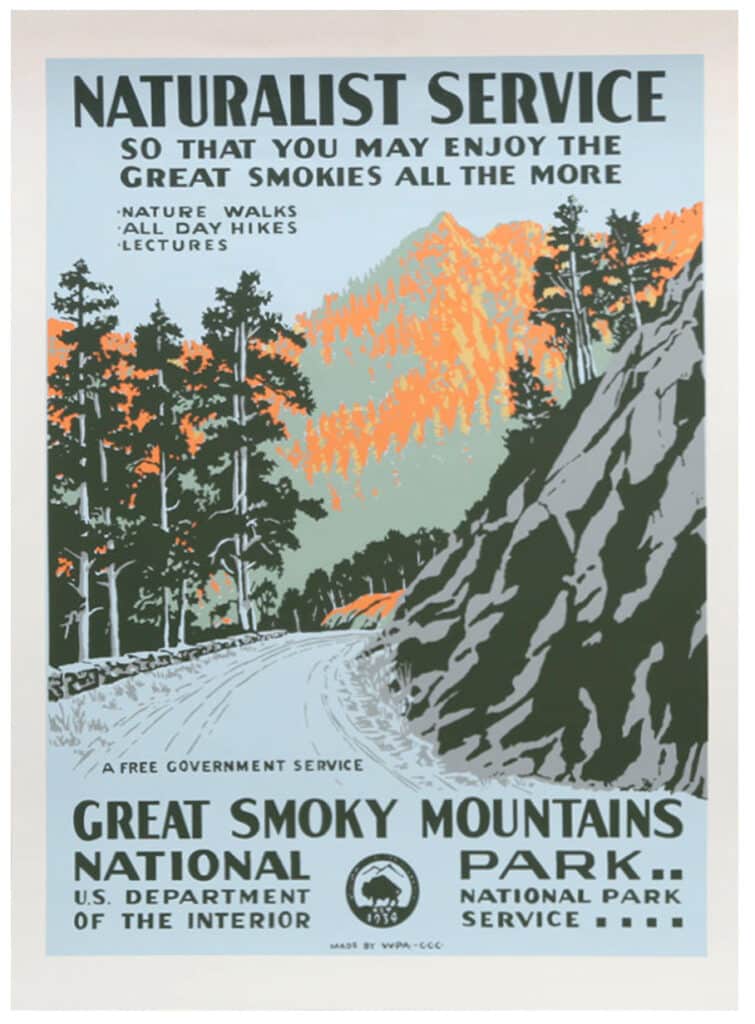
Tips for Collectors
For those interested in starting or expanding a collection of National Park posters, there are a few things to keep in mind.
- Authenticity: Original WPA posters are extremely rare and valuable. Look for documentation or provenance to verify authenticity.
- Condition: As with any vintage print, condition matters. Posters with vibrant colors and minimal damage are more desirable.
- Reproductions: High-quality reproductions and modern tributes to the WPA style are widely available. These can be a more affordable way to enjoy the iconic designs.
- Display: Consider framing and displaying posters in a way that protects them from light and humidity. This preserves their beauty for years to come.
The Hunt for Lost Posters and Noteworthy Collector Finds
The story of the WPA National Park posters is as much about the thrill of discovery as it is about art and history. Since that fateful day when Doug Leen rescued a tattered Grand Teton poster from the trash, a dedicated community of collectors and historians has joined the hunt for lost originals. Leen himself has spent decades tracking down surviving copies. He has combined archival research, gallery auctions, junk store reconnaissance, and negotiations with private collectors. His quest has become legendary among antiques enthusiasts. He has earned the nickname “Ranger of the Lost Art.”
The hunt has led to some remarkable finds. For example, 13 copies of the original poster for Bandelier National Monument were a testament to how these works were often repurposed and overlooked. Leen has managed to locate 11 or 12 of the original 14 park prints. Another is known to be in a private collection. The two still missing are the posters for Wind Cave National Park and Great Smoky Mountains National Park. These have never been found, though black-and-white photographs of them exist. Leen has even offered a $10,000 reward for the donation of these missing posters to the NPS Archives, depending on condition.
Collectors continue to scour antique shops, flea markets, and online auctions. They hope to uncover one of the few remaining originals. The rarity of these posters, with only about 40 original prints recovered, makes each discovery a significant event in the world of vintage Americana. The thrill of the hunt, combined with the historical and artistic value of the posters, keeps the passion for collecting alive.
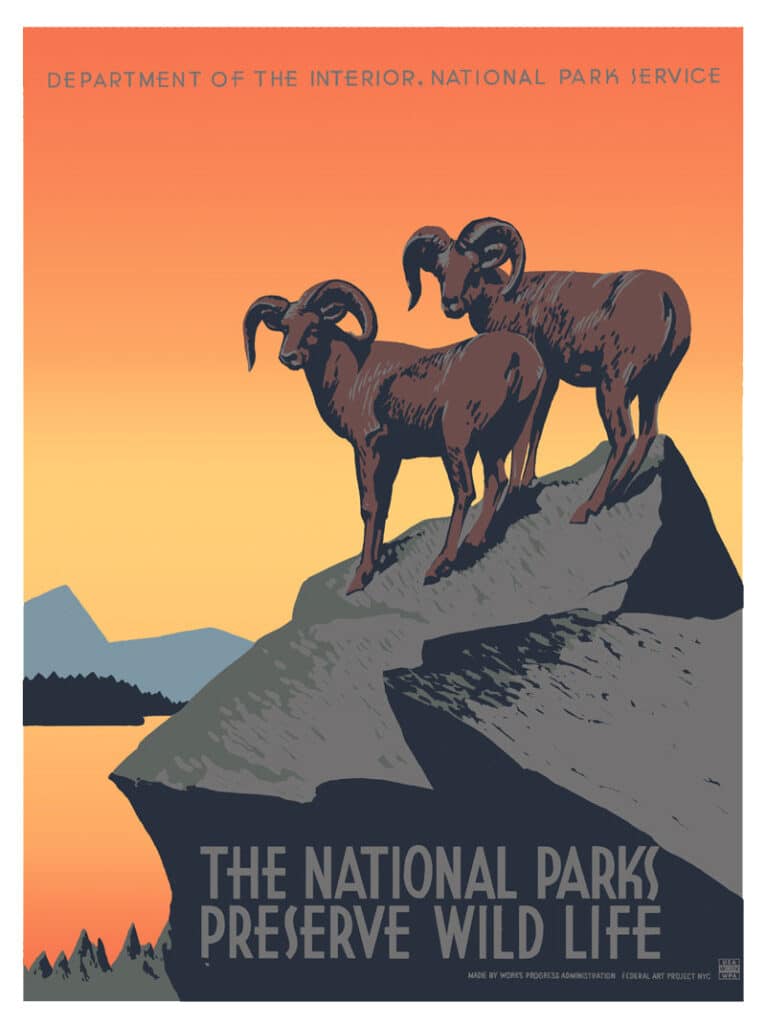
The Legacy Continues
The influence of the WPA National Park posters can still be seen today. Contemporary artists and designers continue to draw inspiration from the bold, optimistic style of the originals. They create new works that pay homage to the parks and the artists who first celebrated them. The posters have become symbols of American resilience and creativity. They are reminders of a time when art and nature came together to inspire a nation.
For antiques enthusiasts, collectors, and anyone who loves the great outdoors, these posters are more than just decorative pieces. They are windows into a pivotal moment in American history. They are a celebration of the beauty and spirit that define the national parks.
A Closer Look at the WPA National Park Posters
Let’s take a moment to appreciate some of the most iconic parks featured in the original WPA series.
- Yosemite: Known for its towering cliffs and waterfalls, Yosemite’s poster is a celebration of
vertical landscapes and dramatic light. - Grand Teton: The poster for Grand Teton captures the jagged peaks and serene lakes that define this Wyoming park.
- Mount Rainier: With its snow-capped peak and wildflower meadows, Mount Rainier’s poster is a study in contrast and color.
- Glacier: The Glacier poster highlights the park’s rugged mountains and glacial valleys. It invites viewers to explore its remote beauty.
Each of these designs is a masterpiece of graphic art. They combine bold imagery with a sense of place that is unmistakably American.
The Cultural Impact
Beyond their aesthetic appeal, the WPA National Park posters played a significant role in shaping the public’s perception of the parks. They helped transform the national parks from remote wilderness areas into beloved destinations. The parks became accessible to all Americans. The posters also contributed to the growing conservation movement. They encouraged people to value and protect the country’s natural heritage.
The legacy of the WPA posters endures in the way Americans perceive and experience their national parks. The images have become part of the cultural fabric. They appear in books, films, and even on merchandise. For collectors, owning a piece of this legacy is a way to connect with the past. It is a way to celebrate the ongoing story of America’s national parks.
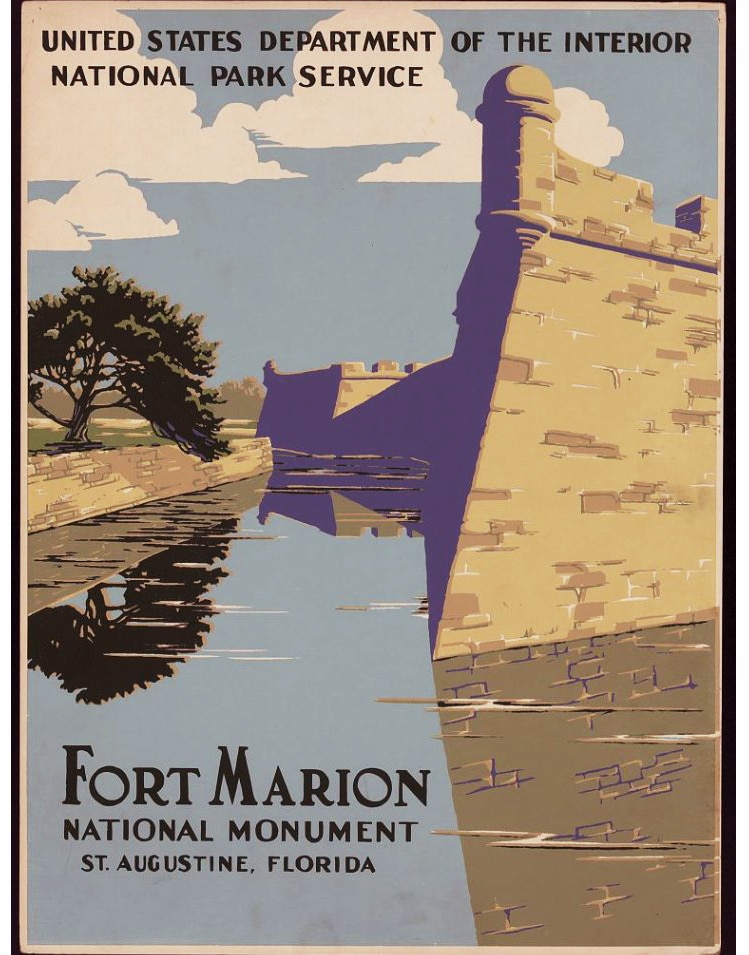
The Merging of Art, Nature, and Inspiration
Collecting WPA National Park posters is about more than just acquiring beautiful objects. It is about honoring a moment in history when art and nature came together to inspire a nation. The posters are reminders of the power of creativity. They highlight the importance of preserving natural beauty, and they celebrate the appeal of the American outdoors.
For antique enthusiasts, these posters offer a unique opportunity to own a piece of American history. That history continues to inspire and delight, just as it did nearly a century ago. Whether displayed in a home, a gallery, or a museum, the WPA National Park posters remain vibrant symbols of hope, adventure, and the enduring spirit of America.
Jessica Kosinski has been a freelance researcher and writer since 2001. She developed a passion for pre-1990s television and films as a child and she has never grown out of it. Recently, she turned that passion into a retro TV and film blog. Follow along with her at https://medium.com/@jkos_writing, as she dives deep into the characters, actors, quirks, and trivia that brought us some of the greatest films and shows in TV history and also discusses some of the more obscure films and shows most of us may have forgotten.
